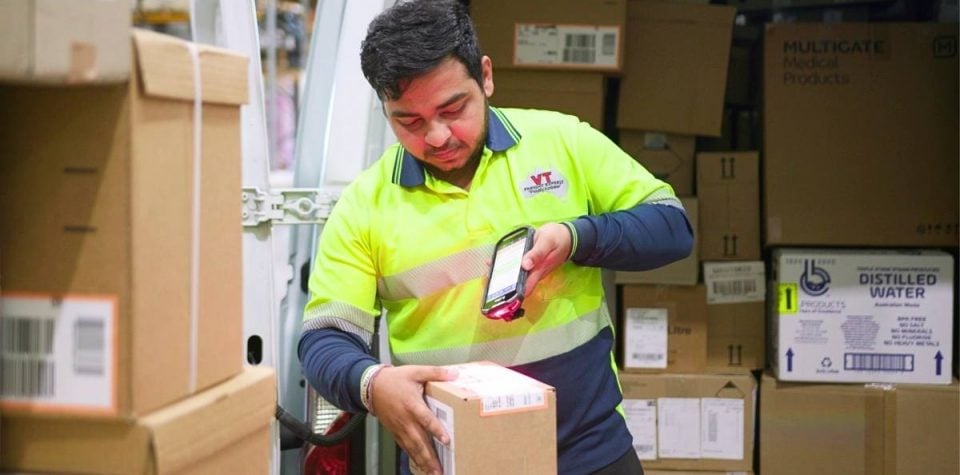Table of Contents:
- Defining Big Data in Logistics
- How Logistics Software Collects and Analyzes Big Data.
- Practical Applications of Big Data in Logistics.
- Overcoming Challenges in Leveraging Big Data
- It’s Time To Go Big
Unlocking the power of Big Data can help to make your logistics company run more smoothly and efficiently, make servicing your clients easier, and boost your profits.
For owners of Australian logistics businesses, data is king. Every shipment, every delivery, and every transaction generates valuable information that you can use for all sorts of things. You can find out things about your client base with data. You can sort your customers into segments so that you can better serve their needs with data. You can monitor and improve your business using data. And you can cut costs and make more money with data.
The rise of so-called Big Data has revolutionised how logistics companies operate, enabling them to make data-driven decisions, enhance efficiency, and ultimately improve their bottom line.
In this blog post, we’ll explore what big data is, how your logistics software system can collect and analyze it, and how it can be harnessed to benefit your Australian logistics business.
Defining Big Data in Logistics
Big Data refers to the massive volumes of structured and unstructured data generated from various sources, including sensors, devices, systems, and customer interactions. In the logistics industry, big data encompasses information relating to shipments, inventory, routes, suppliers, and more.
The three key characteristics that define big data are often referred to as The Three Vs. These are:
- Volume. The sheer amount of data generated in the logistics sector is immense, ranging from shipment tracking data to customer feedback.
- Velocity. Data is produced rapidly and continuously, requiring real-time processing and analysis to derive meaningful insights.
- Variety. Logistics data comes in a challenging variety of formats, including text, numbers, images, radio transmissions, phone calls and more.
Managing these Three Vs is crucial for making sense of big data and finding patterns within it that are useful for your business. But once you get the hang of working with all of this information it can be incredibly valuable for making decisions, price setting, monitoring your business, and evaluating obstacles before they can muck things up.
How Logistics Software Collects and Analyzes Big Data.
So let’s assume that your logistics business already has a robust and perfectly functioning software system set up and running. Perhaps you use one of TransVirtual’s big three packages — TMS, WMS, Fleet Management — and are ready to take advantage of the big data sets they can deliver. Let’s look at how it’s done.
Data collection
Logistics software plays a pivotal role in collecting big data by integrating with various systems and devices involved in the supply chain. Data can be funnelled to you through several channels including:
- IoT Sensors: Internet of Things (IoT) sensors on vehicles, warehouses, and assets collect real-time data on temperature, humidity, location, and more.
- GPS and RFID: Logistics software leverages GPS and RFID technology to track shipments and monitor their progress in real-time.
- Customer Interaction: Without even knowing it, your customers can supply you with some rich veins of data. Interactions with customers through websites and apps generate data on preferences, behaviour, and feedback.
Data storage
All this useful info needs to be stored in a way that you can access it and interpret it easily. Logistics software employs robust databases to store collected data securely. This data is structured and organized for easy access and retrieval when needed.
Data Analysis
Advanced analytics tools are integrated into logistics software to process and analyse big data. These tools utilise machine learning algorithms and artificial intelligence to uncover patterns, trends, and actionable insights.
Does it sound good so far? Not too technical? We promise it gets easier to understand as you go along.
Practical Applications of Big Data in Logistics.
Now that we’ve covered how logistics software handles big data, let’s explore how it can be harnessed to improve the bottom line of Australian logistics companies in general…and yours in particular!
Market segmentation
We love this stuff. Being able to chop your customer base up into small segments (not literally, of course…this isn’t a Pink Floyd song!) makes servicing their specific needs so much easier.
Market segmentation is a powerful strategy enabled by big data. Logistics software can analyse customer data to categorise clients into distinct segments based on their preferences, shipping habits, and buying behaviour. This information allows logistics companies to:
- Tailor marketing efforts to specific segments.
- Optimise pricing and service offerings for different customer groups.
- Identify high-value customers and nurture these relationships for increased revenue.
Demand forecasting
Accurate demand forecasting is essential to avoid overstocking or understocking inventory. Logistics software uses historical data, market trends, and predictive analytics to provide insights into future demand patterns.
This will enable your company to:
- Minimise carrying costs by stocking the right amount of inventory.
- Improve supply chain efficiency by anticipating fluctuations in demand.
- Reduce the risk of stockouts, ensuring customer satisfaction.
Route optimisation
Another one of our faves! Big data helps optimise logistics routes by considering factors like traffic conditions, weather, and vehicle performance. Logistics software can create optimal routes for deliveries, reducing fuel consumption and transportation costs while improving delivery times.
This has multiple benefits such as:
- Cost savings through reduced fuel consumption.
- Enhanced customer satisfaction due to timely deliveries.
- Minimised wear and tear on vehicles, thus reducing maintenance costs.
Automated email workflows
This is absolute magic! Automated email workflows powered by big data can significantly improve customer engagement and retention. Logistics software can trigger personalised emails based on customer behaviour, such as order confirmations, shipping updates, and feedback requests.
And it does this automatically while you and your staff are down at the pub having a VB or three (see what we did there?). Targeted emails are less intrusive and annoying to your customers. They also have the following benefits for you:
- Improved customer communication and satisfaction.
- Increased customer loyalty and repeat business.
- Efficient use of marketing resources.
Predictive maintenance
Gotta keep the wheels turning. For logistics companies with fleets of vehicles and equipment, predictive maintenance is crucial. By analysing data from sensors and historical maintenance records, logistics software can predict when equipment is likely to fail. This will allow you to:
- Schedule maintenance proactively, minimising downtime.
- Extend the lifespan of assets, reducing replacement costs.
- Ensure the safety of drivers and cargo through well-maintained vehicles.
Overcoming Challenges in Leveraging Big Data
Big data has revolutionised various industries, and logistics is no exception. The potential benefits of big data in logistics are significant, including improved efficiency, reduced costs, and enhanced customer satisfaction. However, several challenges need to be addressed, such as data privacy concerns, data quality, and the lack of skilled data analysts.
So if you are looking at using the data gleaned by your software systems, you will also need to invest in robust data governance practices and provide training to your employees to maximise the advantages of big data.
Data privacy concerns
One of the primary challenges in utilising big data in logistics is ensuring the privacy of sensitive information. With the increasing concern over data breaches and cybersecurity threats, logistics companies must implement strict data privacy policies and procedures to protect customer data.
This includes encrypting sensitive information, using secure communication channels, and providing employee training on data privacy best practices.
Data quality
Data is only useful if it is accurate. So another challenge in big data analytics is maintaining data quality. Inaccurate, incomplete, or outdated data can lead to poor decision-making and reduced efficiency.
To overcome this challenge, logistics companies must invest in data cleaning and validation tools. This can include checking for duplicates, verifying addresses, and ensuring that data is as up-to-date as possible.
Skilled data analysts
There’s nothing to be gained by chucking a bunch of data at staff who do not understand how to break it down into useful information. The effective use of big data in logistics requires a workforce with the necessary skills and expertise.
Across Australia, there is a growing demand for data analysts and data scientists who can make sense of large, complex datasets. To address this need, consider investing in employee training and development programs, as well as recruitment efforts that focus on candidates with strong data analytics skills.
Your training could include workshops, seminars, and online courses that cover topics such as data protection, data quality, and data visualisation. By equipping employees with the knowledge and skills necessary to utilise big data effectively, you can drive innovation and maintain a competitive edge in the market.
It’s Time To Go Big!
In today’s competitive logistics landscape, Australian companies cannot afford to ignore the power of big data. Your logistics software suite can collect, analyse, and utilise big data to improve market segmentation, accurately forecast demand, optimise your driver’s routes, automate your email workflows, and predict when you need to maintain the equipment in your fleet.
By harnessing the potential of big data, you can enhance your productivity, reduce your costs, streamline your marketing programs and provide superior service to your customers. It really is a great time to go BIG!



